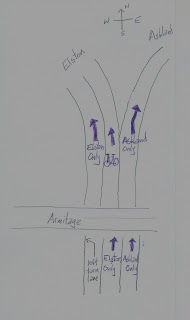Not only will 80–90 percent of the population have issues with low-back pain sometime during their adulthood but, in addition, back pain is one of the most common symptoms inducing people to visit a physician and is involved in almost a fourth of all occupational injuries and illnesses. In 2001, back injuries resulted in the highest percentage of short-term disability of all nonfatal illness and injury cases. In sum, back pain, especially low-back pain, is a big problem—for workers, employers, and insurance companies alike.
Part of the problem is that back pain can be difficult to diagnose, and physicians often overlook or misdiagnose trigger point pain (that is, localized areas of muscle soreness that refer pain to elsewhere in the body). This diagnostic difficulty can lead to treatments that don’t accurately address the problem, such as painkillers, which don’t necessarily rectify the problem but simply dull the pain. It is also worth mentioning that surgical rates for low-back pain are twice as high in the United States as in most other developed countries.
Often, to give a commonly occurring example, clients who are experiencing low-back pain actually have an issue with trigger points in the gluteal muscles, the piriformis muscle (which lies deep to the glutes), or even muscles as far away as the calf (the soleus muscle, to be exact). The piriformis, in particular, seems to be a major culprit when it comes to low-back pain. In my own practice, when I release knots in the piriformis muscle, I have had clients say they can feel the tension in their lower backs dissolve immediately. I even had one client say he felt his whole back realign when the tight spot in his piriformis let go.
Because low-back pain relief can be so close at hand—literally—it only makes sense to visit a knowledgeable massage therapist before trying something more invasive or simply palliative but not curative (such as pharmacologic “solutions”). And research is mounting to support this course of action. In one study, massage recipients reported less pain, depression, and anxiety, as well as improved sleep, and they showed improved trunk flexion. Stress hormones associated with chronic low-back pain were also reduced. A more recent study found similar results, with benefits lasting up to six months. And numerous other studies have shown massage to be helpful in relieving back pain.
Although reduction of stress hormones may come into play, in terms of how massage works to relieve low-back pain, as found in the one study, other researchers aren’t sure why massage seems to work. It may be that massage stimulates the muscle tissue locally or that it causes a response from the central nervous system. They also hypothesize that the reasons for improvement could be as simple as being in a relaxing environment or being cared for by a sympathetic therapist.
In any case, I agree with the chief author of the most recent study, who was quoted as saying, “If you’ve tried other things and you’re not getting adequate relief, then massage is a reasonable thing to try.” I would go one step further, though, and suggest that perhaps massage should be one of the first things you try.
Sources
Bagduk, Nikolai. 2004. “Management of Chronic Low Back Pain.” Medical Journal of Australia, vol. 180.
Bakalar, Nicholas. 2011. “Stubborn Back Pain? Try Massage.” New York Times, July 4 (http://well.blogs.nytimes.com/2011/07/04/embargo-july-4-5pm-for-back-pain-try-massage/?scp=1&sq=%22low%20back%20pain%22&st=cse).
Cherkin, Daniel C., et al. 2011. “A Comparison of the Effects of Two Types of Massage and Usual Care on Chronic Low Back Pain: A Randomized, Controlled Trial.” Annals of Internal Medicine 155:1–9.
Deyo, Richard A. 1983. “Conservative therapy for low back pain: Distinguishing Useful from Useless Therapy.” Journal of the American Medical Association 250:1057–62.
Deyo, Richard A., et al. 1996. “Low Back Pain: A Primary Care Challenge.” Spine 21:2826–32.
Hernandez-Reif, Maria, et al. 2001. “Lower Back Pain Is Reduced and Range of Motion Increased after Massage Therapy.” International Journal of Neuroscience 106:131–45.
Papadopoulos, E. C., and S. N. Kahn. 2004. “Piriformis Syndrome and Low Back Pain: A New Classification and Review of the Literature” Orthopedic Clinics of North America 2004 35:65–71.
Simons, D. G., and J. G. Travell. 1983. “Myofascial origins of low back pain. 3. Pelvic and lower extremity muscles. Postgraduate Medicine 73:99–105, 108.
U.S. Department of Health and Human Services, Public Health Service, Centers for Disease Control and Prevention. 2004. Worker Health Chartbook 2004. Publication no. 2004-146. Cincinnati, OH: U.S. DHHS, PHS, CDCP, National Institute for Occupational Safety and Health. Fig. 1-38.


